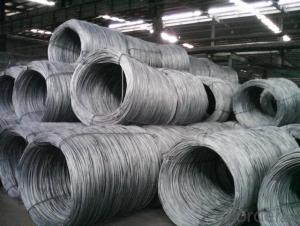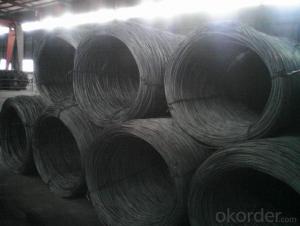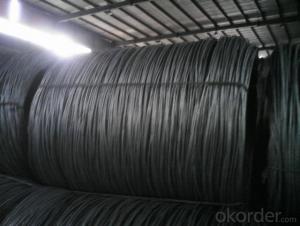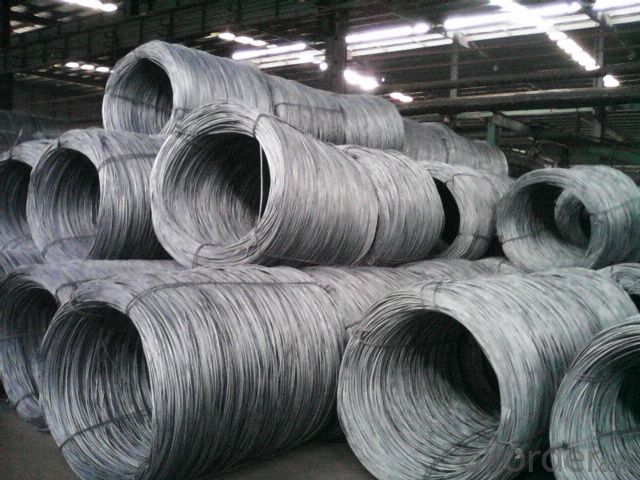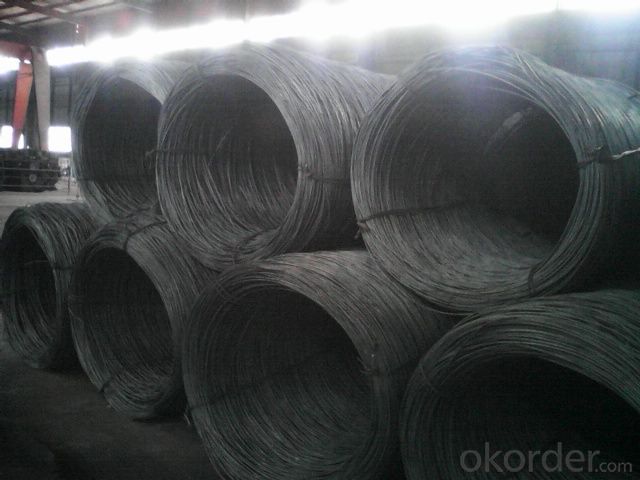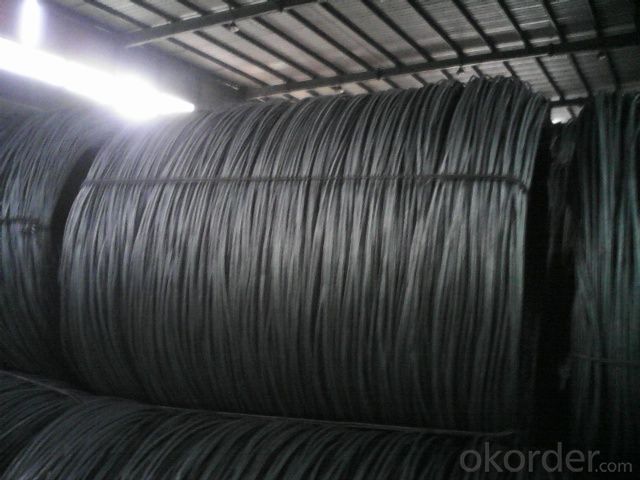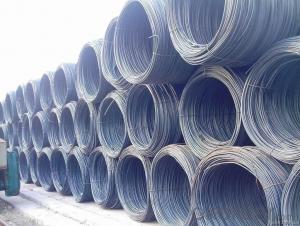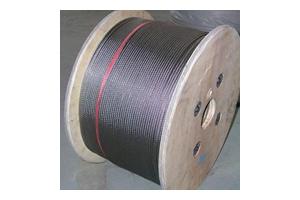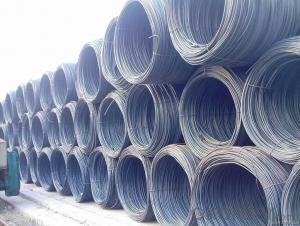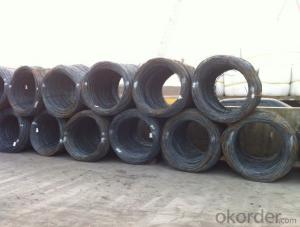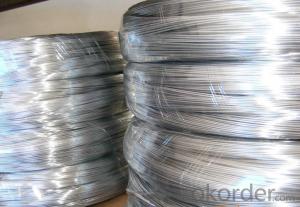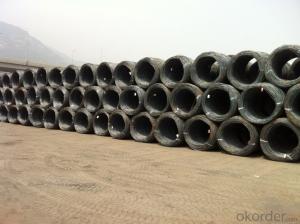Steel Wire Rod Stainless with High Qaulity and Competitive Prices
- Loading Port:
- Tianjin
- Payment Terms:
- TT or LC
- Min Order Qty:
- 20 m.t.
- Supply Capability:
- 10000 m.t./month
OKorder Service Pledge
OKorder Financial Service
You Might Also Like
Product Description:
OKorder is offering Steel Wire Rod Stainless with High Qaulity and Competitive Prices with worldwide shipping. Our supplier is a world-class manufacturer of steel, with our products utilized the world over. OKorder annually supplies products to European, North American and Asian markets. We provide quotations within 24 hours of receiving an inquiry and guarantee competitive prices.
Product Applications:
Steel Wire Rod Stainless with High Qaulity and Competitive Prices are ideal for structural applications and are widely used in the construction of buildings and bridges, and the manufacturing, petrochemical, and transportation industries.
Product Advantages:
OKorder's Steel Wire Rod Stainless with High Qaulity and Competitive Prices are durable, strong, and resist corrosion.
Main Product Features:
· Premium quality
· Prompt delivery & seaworthy packing (30 days after receiving deposit)
· Corrosion resistance
· Can be recycled and reused
· Mill test certification
· Professional Service
· Competitive pricing
Packaging & Delivery:
Packaging Detail: products are packed in bundle and then shipped by container or bulk vessel, deformed bar is usually naked strapping delivery, when storing, please pay attention to moisture proof. The performance of rust will produce adverse effect.
Each bundle weight: 2-3MT, or as required
Payment term: TT or L/C
Delivery Detail: within 45 days after received advanced payment or LC.
Label: to be specified by customer, generally, each bundle has 1-2 labels
Trade terms: FOB, CFR, CIF
FAQ:
Q1: Why buy Materials & Equipment from OKorder.com?
A1: All products offered byOKorder.com are carefully selected from China's most reliable manufacturing enterprises. Through its ISO certifications, OKorder.com adheres to the highest standards and a commitment to supply chain safety and customer satisfaction.
Q2: How do we guarantee the quality of our products?
A2: We have established an advanced quality management system which conducts strict quality tests at every step, from raw materials to the final product. At the same time, we provide extensive follow-up service assurances as required.
Q3: How soon can we receive the product after purchase?
A3: Within three days of placing an order, we will begin production. The specific shipping date is dependent upon international and government factors, but is typically 7 to 10 workdays.
Images:
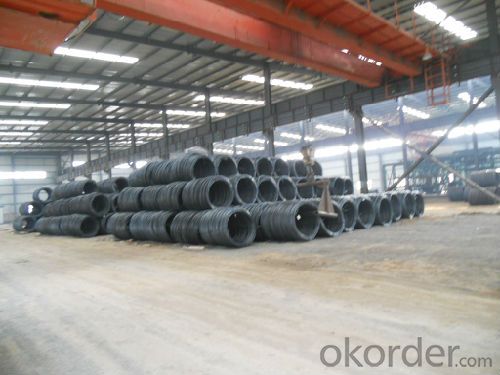
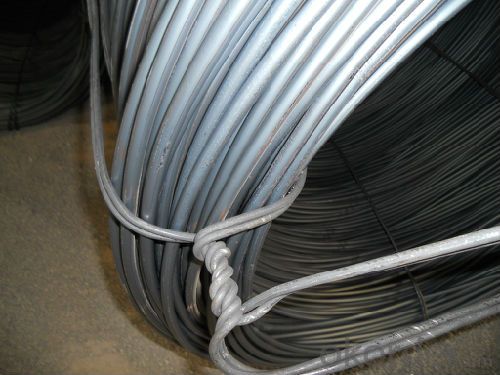
- Q: What are the different types of steel wire rod finishes for improved lubricity?
- There are several types of steel wire rod finishes commonly used to enhance lubricity, including zinc-coated finishes, galvanized finishes, and phosphate finishes. These finishes create a protective layer on the surface of the wire rod, reducing friction and allowing for smoother movement and improved lubrication.
- Q: What are the typical chemical compositions of steel wire rod?
- The typical chemical compositions of steel wire rod vary depending on the specific grade and desired properties. However, commonly used compositions include carbon (0.06-0.25%), manganese (0.30-1.00%), silicon (0.10-0.30%), sulfur (0.05% max), and phosphorus (0.04% max). Other elements like chromium, nickel, and copper may also be present in smaller amounts to enhance certain properties.
- Q: How are steel wire rods used in the manufacturing of fishing nets?
- Steel wire rods are an essential component in the manufacturing of fishing nets. These rods serve as the skeletal structure of the net, providing strength and durability to withstand the harsh conditions of fishing. To begin the manufacturing process, the steel wire rods are first straightened and cut into various lengths, depending on the desired size of the net. These rods are then woven or knotted together to form the net's framework. The tight weaving ensures that the net is sturdy enough to withstand the pressure of catching fish and resist breaking or tearing. The steel wire rods used in fishing nets are specifically chosen for their high tensile strength and corrosion resistance. This makes them suitable for enduring the corrosive effects of saltwater, as fishing nets are primarily used in marine environments. Additionally, the steel wire rods are often coated with a protective layer, such as zinc or PVC, to further enhance their durability and prevent rusting. Furthermore, the flexibility of steel wire rods allows the fishing net to adapt to different shapes and sizes. This flexibility is crucial as it enables the net to conform to the contours of the water, maximizing its effectiveness in capturing fish. In conclusion, steel wire rods play a vital role in the manufacturing of fishing nets, providing the necessary strength, durability, and flexibility. Their high tensile strength and corrosion resistance make them an ideal choice for withstanding the harsh conditions of fishing. Without these steel wire rods, the manufacturing of fishing nets would not be possible, and the fishing industry would be greatly impacted.
- Q: What is steel wire rod?
- Steel wire rod is a long, cylindrical semi-finished metal product that is produced through a series of rolling processes. It is made from high-quality steel and has a round cross-section. Steel wire rod is used as a raw material in various industries, such as construction, automotive, and manufacturing, where it is further processed into different forms of wire products, such as nails, bolts, springs, and wire mesh.
- Q: How is steel wire rod used in the manufacturing of wire screens?
- Steel wire rod is used in the manufacturing of wire screens as the primary raw material. It is first drawn through a series of dies to reduce its diameter and increase its length, resulting in a smooth and uniform wire. This wire is then woven or welded together to create wire screens, which are commonly used in various industries for filtration, screening, and protection purposes. The strength and durability of steel wire rod make it particularly suitable for withstanding heavy loads and harsh environments, ensuring the longevity and effectiveness of wire screens.
- Q: What are the different tensile strengths available for steel wire rod?
- The tensile strengths available for steel wire rod can vary depending on the specific steel grade and manufacturing process. However, common tensile strengths for steel wire rod range from around 500 MPa (megapascals) to 2000 MPa.
- Q: How is steel wire rod used in the manufacturing of wire fences?
- Steel wire rod is used in the manufacturing of wire fences as it serves as the base material for creating the wire strands that form the fence. The wire rod is first drawn to the desired thickness and strength, and then it is further processed to form individual wires that are twisted or woven together to create the fence structure. The high strength and durability of steel wire rod make it an ideal choice for wire fences, providing security, containment, and longevity.
- Q: What are the typical chemical compositions of steel wire rod?
- The chemical compositions of steel wire rods can differ depending on the grade and intended use of the wire rod. However, iron (Fe) and carbon (C) are the most prevalent elements in steel wire rods. The carbon content in steel wire rods typically ranges from 0.05% to 0.85%. Apart from iron and carbon, other elements are frequently incorporated into steel wire rods to enhance specific properties. These elements include manganese (Mn), silicon (Si), sulfur (S), phosphorus (P), and occasionally chromium (Cr), nickel (Ni), and copper (Cu). Manganese is commonly added to improve the strength and hardenability of the wire rod. Silicon is added to boost the steel's resistance to oxidation and enhance its electrical properties. Sulfur and phosphorus are impurities that are usually limited to low levels due to their detrimental effects on the steel's ductility and toughness. Chromium, nickel, and copper are sometimes introduced to steel wire rods to enhance their corrosion resistance or improve specific mechanical properties. These elements are often found in stainless steel wire rods, which are used in applications that require high resistance to corrosion. It is important to note that the precise chemical composition of steel wire rods may vary depending on the steelmaking process and the presence of additional alloying elements or impurities. Therefore, it is crucial to consult the manufacturer's specifications or standards to determine the exact chemical composition of a particular steel wire rod.
- Q: What are the different types of steel wire rod coatings used for improved heat resistance?
- There are several different types of steel wire rod coatings that are commonly used to improve heat resistance. These coatings are applied to the surface of the steel wire rod to provide a protective barrier and enhance its ability to withstand high temperatures. One of the most common types of coating used for heat resistance is zinc. Zinc coatings, such as hot-dip galvanizing or zinc-aluminum alloy coatings, are effective in protecting the steel wire rod from heat and corrosion. The zinc coating forms a sacrificial layer that prevents the underlying steel from coming into contact with oxygen and moisture, thus reducing the risk of oxidation and corrosion. Another type of coating used for improved heat resistance is aluminum. Aluminum coatings are applied through a process called aluminum thermal spraying, where molten aluminum is sprayed onto the steel wire rod surface. This creates a durable and heat-resistant barrier that helps to maintain the integrity of the wire rod under high temperatures. In addition to zinc and aluminum coatings, there are also specialized coatings such as ceramic coatings and high-temperature resistant polymer coatings. Ceramic coatings are made from inorganic materials and provide excellent heat resistance, making them suitable for applications in extreme temperature environments. High-temperature resistant polymer coatings, on the other hand, are organic coatings that can withstand high temperatures without degradation. Overall, the different types of steel wire rod coatings used for improved heat resistance offer varying levels of protection and durability. The choice of coating depends on factors such as the specific application, operating temperature range, and desired level of heat resistance.
- Q: How are steel wire rods used in the manufacturing of piano strings for musical instruments?
- Steel wire rods are used in the manufacturing of piano strings for musical instruments by being drawn through a series of dies to achieve the desired thickness and strength. These wire rods are then wound tightly around a core wire to create the piano string. The high tensile strength of steel wire makes it ideal for withstanding the tension required to produce the desired pitch and resonance in a piano.
Send your message to us
Steel Wire Rod Stainless with High Qaulity and Competitive Prices
- Loading Port:
- Tianjin
- Payment Terms:
- TT or LC
- Min Order Qty:
- 20 m.t.
- Supply Capability:
- 10000 m.t./month
OKorder Service Pledge
OKorder Financial Service
Similar products
Hot products
Hot Searches
Related keywords
